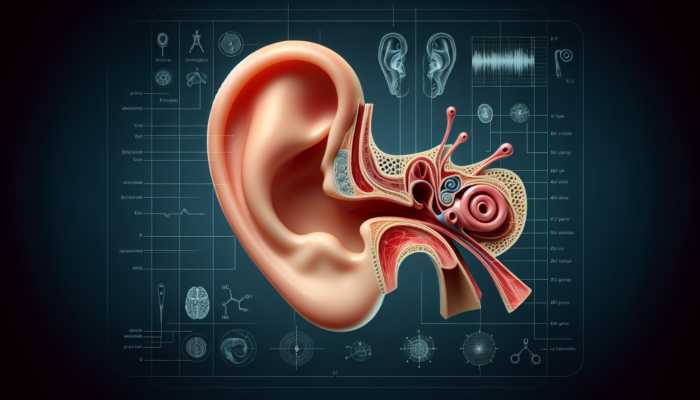Last Updated on 22/04/2025 by Admin
Understanding the Crucial Role of Hearing Health in Daily Life
The significance of hearing health is frequently underestimated within the broader context of overall well-being. However, it is crucial to recognize that hearing health dramatically influences how individuals perceive their surroundings and engage with others. As global awareness regarding various health issues continues to rise, understanding the profound implications of hearing loss on one’s quality of life becomes increasingly vital. This issue is especially pronounced in various regions worldwide, including rural communities in Africa and urban centers in Asia, where the consequences of hearing impairment can be particularly devastating. The urgent need for increased awareness about the importance of maintaining hearing health, particularly in the context of why hearing aids need more awareness, cannot be overstated.
Exploring the Multi-Dimensional Impact of Hearing Loss on Quality of Life
Visualize a scenario where everyday conversations dissolve into silence, transforming social gatherings into isolating experiences rather than enjoyable occasions. For millions of individuals worldwide, this unsettling reality characterizes their existence with hearing loss. The multifaceted impact on quality of life spans various domains, significantly influencing communication, social interactions, and mental health. Individuals grappling with hearing difficulties often retreat from social situations, which can lead to profound feelings of isolation and depression. In regions where familial and communal bonds are paramount, such as in Latin America and Southeast Asia, this sense of isolation can become particularly pronounced, exacerbating emotional struggles.
Numerous studies have revealed a strong connection between untreated hearing loss and notable declines in mental health. Research published in reputable international journals suggests that individuals encountering hearing difficulties are at a heightened risk of grappling with anxiety and depression. Compounding these challenges is the social stigma that surrounds hearing aids, with many individuals perceiving their use as a sign of aging or weakness. This misconception can create a detrimental cycle: reluctance to seek necessary help leads to deteriorating conditions, further intensifying mental and emotional health challenges.
It is essential to educate communities about the psychological and social consequences of hearing loss. Campaigns that share personal narratives can evoke empathy and promote understanding, illustrating that seeking assistance is not a sign of frailty, but rather a proactive step towards enhancing one’s quality of life. By fostering open conversations about the realities of hearing health, we can collectively work towards destigmatizing the need for hearing aids and encourage individuals to seek the support they deserve.
The Advantages of Early Detection in Hearing Loss
The advantages associated with the early detection of hearing loss are profound, serving as a pivotal intervention that can significantly enhance individual outcomes. Recognizing hearing difficulties promptly allows individuals to adapt effectively and utilize hearing aids, which can prevent further deterioration of auditory function. In countries such as Japan, where advanced audiological screening programs exist, early detection facilitates better integration of hearing aid technology, ultimately improving communication abilities in both children and adults.
Moreover, research has indicated that individuals who address their hearing loss early tend to experience enhanced professional outcomes. In various workplaces across Europe and North America, employees who utilize hearing aids report heightened job satisfaction and performance, often leading to career advancement opportunities. This observation underscores the necessity for comprehensive screening programs and awareness initiatives that motivate individuals to seek assistance sooner rather than later.
Promoting awareness about the critical nature of early detection can pave the way for comprehensive public health strategies, including routine hearing checks in schools and workplaces. By cultivating an environment that prioritizes hearing health, communities can significantly enhance overall well-being and empower individuals to take charge of their auditory health.
Long-Term Health Consequences of Neglected Hearing Health
Ignoring the importance of hearing health can lead to severe long-term health implications that transcend mere communication difficulties. Recent research increasingly highlights a robust correlation between untreated hearing loss and cognitive decline, including an elevated risk of developing dementia. Reports from reputable organizations such as the World Health Organization indicate that individuals with significant hearing impairment are up to five times more likely to experience cognitive decline compared to their hearing counterparts.
This alarming trend accentuates the urgent need to amplify awareness about why hearing aids need more awareness. As individuals age, the risks associated with untreated hearing loss become increasingly pronounced. In many cultures, particularly within Western societies, aging is often erroneously associated with inevitable decline. Challenging these misconceptions through education and advocacy can empower older adults to seek assistance earlier, potentially mitigating risks associated with cognitive health and enhancing overall quality of life.
The implications of untreated hearing loss extend into economic realms as well. Countries grappling with aging populations must recognize that investing in hearing health can yield broader societal benefits, including reduced healthcare costs linked to cognitive decline. By prioritizing awareness and access to hearing aids, nations can promote healthier, more engaged communities and improve the overall quality of life for their citizens.
Identifying and Overcoming Barriers to Hearing Aid Adoption
Despite remarkable advancements in technology and the undeniable benefits of hearing aids, numerous barriers hinder their widespread adoption. Understanding these obstacles is crucial when addressing why hearing aids need more awareness, as it highlights systemic issues that need to be confronted to improve global hearing health outcomes.
Addressing Cost and Accessibility Challenges in Hearing Aid Acquisition
One of the most significant barriers to the adoption of hearing aids is the prohibitive cost associated with these essential devices. In many developing nations, the price of hearing aids can be astronomical, often placing them out of reach for average citizens. For instance, in regions of South America and Africa, families may struggle to afford basic necessities, let alone advanced hearing technology. This economic disparity leads to a substantial portion of the population remaining untreated, exacerbating challenges related to communication and social inclusion.
Even in wealthier nations, the high price of hearing aids remains a considerable barrier. Many health insurance plans do not cover the cost of hearing aids, which can range from hundreds to thousands of dollars. This lack of financial support creates a scenario where individuals may prioritize other health issues over hearing health, perpetuating a cycle of neglect and isolation.
To combat this issue, certain organizations are advocating for policy changes that would require insurance coverage for hearing aids. Additionally, non-profit initiatives are emerging that aim to provide affordable or subsidized hearing aids to underserved populations. By shedding light on these efforts and the transformative potential of hearing health, we can begin to dismantle the financial barriers that hinder adoption and promote accessibility for all.
Confronting Stigma and Misconceptions Surrounding Hearing Aids
The stigma surrounding hearing aids is a formidable deterrent that prevents many individuals from seeking the help they need. Globally, there exists a pervasive misconception that wearing hearing aids is indicative of weakness or aging, leading to feelings of shame and embarrassment. In numerous cultures, particularly those in Asia and the Middle East, the emphasis on youth and vitality can exacerbate these feelings, causing individuals to postpone seeking assistance.
Public perception plays a critical role in shaping how hearing aids are viewed and accepted. Addressing these negative perceptions through awareness campaigns is essential in diminishing stigma. Personal testimonials from users who have experienced transformative changes in their lives after receiving hearing aids can be particularly effective in breaking down barriers. These narratives can humanize the issue and illustrate that seeking help is a sign of strength and resilience, not weakness.
Communities must also work diligently to normalize the use of hearing aids through education and advocacy efforts. By fostering an environment where hearing aids are perceived as empowering tools rather than sources of shame, we can encourage more individuals to seek the assistance they require and deserve.
Bridging the Information Gap Regarding Hearing Aids
In today’s digital landscape, the vast array of information available can be a double-edged sword. While numerous valuable resources exist, many individuals remain unaware of the latest advancements in hearing aid technology and the associated benefits. This lack of information is particularly pronounced in less affluent regions, where access to knowledge about hearing health may be restricted.
Educational initiatives focusing on the latest research and innovations in hearing aids can bridge this knowledge gap effectively. Engaging community organizations or healthcare providers to host informative workshops can empower individuals to learn about their options and make informed decisions. Moreover, leveraging technology, such as social media platforms, can facilitate rapid and effective dissemination of awareness.
As more individuals become informed about the capabilities of modern hearing aids, including features such as Bluetooth connectivity and noise cancellation, the stigma surrounding their use may gradually diminish. This educational approach will be crucial in promoting acceptance and ultimately increasing adoption rates, leading to improved hearing health across communities.
Enhancing Professional Support in Hearing Health
In numerous regions worldwide, there exists a notable shortage of qualified audiologists and hearing specialists. This lack of professional support can create significant hurdles for individuals seeking assistance with their hearing health. For instance, in rural areas of North America and Africa, access to hearing health professionals may be limited, compelling individuals to travel long distances for their appointments.
This constrained access can delay the fitting and ongoing care necessary for effective hearing aid use. For many individuals, the journey to effective hearing health begins with an audiological assessment, and without easy access to qualified professionals, many may remain untreated, perpetuating the cycle of hearing loss and isolation.
Advocacy for increased funding and training for hearing health professionals can address this issue on a larger scale. Efforts to enhance telehealth services can also bridge the gap, allowing individuals in remote areas to receive care without the burden of travel. By expanding professional support networks, we can facilitate a smoother process for adopting hearing aids and improve overall access to hearing health services.
Overcoming Technological Complexity in Hearing Aids
As technology continues to advance, modern hearing aids have evolved into increasingly sophisticated devices, offering features tailored to diverse user needs. However, the complexity of these devices can be overwhelming for individuals who may not be familiar with technology. Features like smartphone integration and app-based controls, while advantageous, can deter potential users who feel intimidated by advanced technology.
To foster adoption, it is essential to simplify the user experience associated with hearing aids. Manufacturers play a pivotal role in this process by creating intuitive interfaces and providing comprehensive user manuals and support services. Educational programs that teach users how to navigate new technologies can empower individuals, instilling confidence in their ability to utilize hearing aids effectively.
Furthermore, community outreach initiatives that offer hands-on demonstrations of hearing aids can demystify the technology. By presenting hearing aids as user-friendly and accessible tools, we can encourage more individuals to embrace these solutions and ultimately improve their quality of life.
Exploring Technological Advancements in Hearing Aids
The landscape of hearing aids has undergone a remarkable transformation over the past decade, fueled by technological advancements that enhance user experience and accessibility. Understanding these innovations is crucial in promoting why hearing aids need more awareness, as they highlight how modern solutions can significantly improve the lives of individuals dealing with hearing loss.
Unveiling Modern Features and Their Benefits
The contemporary hearing aid represents a pinnacle of technological innovation, equipped with features that substantially enhance the user experience. Innovations such as Bluetooth connectivity enable users to connect their hearing aids to smartphones, televisions, and other devices, facilitating seamless communication. For instance, enjoying music or participating in phone conversations becomes a more engaging experience, as sound is transmitted directly to the hearing aids.
In addition to enhanced connectivity, advancements in noise reduction technology have vastly improved the functionality of hearing aids. Users can now enjoy a more natural listening experience by filtering out background noise, which is particularly beneficial in crowded environments such as restaurants or social gatherings. The ability to adjust settings in real-time through mobile applications offers further customization, allowing individuals to tailor their hearing experience based on their surroundings.
The global implications of these innovations are profound. As more individuals become aware of the advanced features available, the stigma surrounding hearing aids may gradually diminish, leading to increased adoption rates. By showcasing the technological benefits of modern hearing aids, public health campaigns can encourage individuals to seek assistance, ultimately enhancing their overall quality of life.
Prioritizing Customization and Comfort in Hearing Aids
Customization is at the forefront of contemporary hearing aid design, addressing the diverse needs and preferences of users across the globe. Manufacturers are increasingly focused on creating devices that provide comfortable and personalized fits. Custom molds and adjustable settings ensure that users can wear their hearing aids for extended periods without discomfort.
In regions where cultural factors influence perceptions of hearing aids, the emphasis on comfort cannot be overstated. For example, in India and other countries where traditional attire may conflict with conventional hearing aid designs, advancements in aesthetic appeal can foster acceptance and encourage use. Sleek, discreet designs that blend with personal style can help normalize hearing aids, making them more appealing to individuals of all ages.
Furthermore, advancements in materials have resulted in more durable hearing aids capable of withstanding various environmental conditions. This durability is particularly crucial in regions characterized by extreme climates, ensuring that users can depend on their devices without frequent replacements.
By emphasizing the customization and comfort of modern hearing aids, awareness campaigns can effectively address the concerns of potential users, motivating them to embrace these life-changing devices.
Enhancing Accessibility in Hearing Aid Distribution
The remarkable strides in technology have also led to increased accessibility of hearing aids for a broader audience. Innovative solutions are emerging that aim to bridge the gap between affordability and quality, ensuring that individuals from diverse socioeconomic backgrounds can access necessary treatment.
In recent years, various initiatives have been launched in multiple countries to provide subsidized or low-cost hearing aids. Non-profit organizations often play a crucial role in this endeavor, working tirelessly to distribute devices to underserved populations. For instance, in parts of Africa and Asia, mobile clinics are established to reach remote communities, providing free hearing assessments and hearing aids to those in need.
Moreover, advancements in telehealth services are expanding access to audiological care. Through virtual consultations, individuals can receive assessments and support without needing physical appointments, making it easier for those in rural or underserved areas to access care.
By highlighting these accessibility improvements, awareness campaigns can inspire hope and action among those who previously felt excluded from hearing health solutions. As more individuals become aware of affordable options, the landscape of hearing aid adoption may shift dramatically, resulting in improved community health outcomes.
Integrating Hearing Aids with Smart Devices for Enhanced Experience
The integration of hearing aids with smart devices represents a significant advancement in personal technology, greatly enhancing the user experience and promoting seamless connectivity. With the capability to connect to smartphones, users can effortlessly adjust settings, stream audio, and manage their hearing aid preferences at their fingertips.
This integration is particularly beneficial in today’s fast-paced world, where individuals heavily rely on technology for daily tasks. For example, users can receive phone calls directly in their hearing aids, eliminating the need for additional accessories. This level of convenience can be transformative for individuals with hearing loss, empowering them to engage more fully in conversations and activities.
As smart home technology continues to evolve, the potential for further integration with hearing aids is vast. Imagine a scenario where users can control their home environment—adjusting the volume of their television or filtering out background noise from appliances—simply through their hearing aids. This seamless blend of technology fosters greater independence and control for individuals with hearing loss.
Raising awareness about the integration of hearing aids with smart devices is essential in encouraging adoption. By showcasing the convenience and enhanced quality of life that these advancements offer, we can inspire more individuals to seek assistance and embrace modern solutions.
Revolutionizing Hearing Aids with Advanced Signal Processing
Advanced signal processing techniques have revolutionized the landscape of hearing aids, significantly improving sound quality and speech understanding. Cutting-edge algorithms can differentiate between various sound frequencies, ensuring that users experience rich, clear audio in diverse environments.
This technological advancement is particularly advantageous in today’s noisy world, where users often find themselves in challenging auditory situations. For example, in bustling urban centers or crowded social settings, modern hearing aids equipped with advanced signal processing can effectively filter out distractions, allowing users to concentrate on conversations without being overwhelmed by background noise.
Moreover, this enhanced sound processing is critical for individuals with varying types of hearing loss. Personalized settings can be calibrated based on individual needs, providing tailored solutions that enhance communication experiences. For instance, children who require hearing aids for educational purposes can benefit from features that prioritize speech frequency, ensuring they can fully engage in classroom activities.
As awareness of these technological advancements grows, so too does the potential for increased adoption of hearing aids. Educational campaigns that highlight the significance of advanced signal processing can empower individuals to seek help and experience the transformative effects of modern hearing aids.
Fostering Education and Advocacy for Hearing Health
Education and advocacy are fundamental in promoting awareness regarding hearing health and the critical significance of hearing aids. Without a dedicated effort to educate the public, many individuals may remain uninformed about their options, leading to further neglect of hearing health issues.
Implementing Public Awareness Campaigns for Hearing Health
Public awareness campaigns serve as powerful tools in enhancing understanding and reducing the stigma associated with hearing aids. These initiatives can take various forms, including social media campaigns, community events, and educational workshops. By leveraging diverse platforms, communities can engage a wide audience and foster meaningful discussions around the importance of hearing health.
Successful campaigns often rely on personal stories from individuals who have benefitted from utilizing hearing aids. These narratives can humanize the issue and motivate others to seek assistance. For instance, showcasing the experiences of young adults who overcame educational challenges due to hearing loss can inspire others facing similar struggles.
Additionally, collaborating with local health organizations can amplify the reach of awareness campaigns. Health fairs, school programs, and community outreach initiatives can provide valuable information regarding hearing health, ensuring that individuals receive the support they need.
As public awareness expands, so too does the likelihood that individuals will pursue assistance for hearing loss. Presenting hearing aids as tools for empowerment rather than symbols of weakness can significantly shift societal attitudes, encouraging more people to take action and prioritize their hearing health.
Advocating for Policy Changes to Enhance Hearing Healthcare Access
Advocacy plays a vital role in driving policy changes that improve access to hearing healthcare and support. By rallying community members and stakeholders, advocates can work towards implementing policies that prioritize hearing health initiatives.
One critical area of focus for advocacy efforts is pushing for insurance coverage of hearing aids. Many individuals face financial barriers that prevent them from accessing necessary treatment, making it imperative to advocate for changes in healthcare policy. Grassroots movements and partnerships with non-profit organizations can amplify these voices, ensuring that hearing health remains a priority on the policy agenda.
Moreover, advocating for increased funding for hearing health programs can yield lasting impacts. By securing funding for research, education, and community outreach initiatives, advocates can help establish a more comprehensive support system for individuals with hearing loss.
As the policy landscape evolves, ongoing advocacy will be essential in ensuring that hearing health receives the attention and resources it rightly deserves.
Building Community Support Networks for Hearing Aid Users
Community support networks are essential in providing encouragement and practical assistance to hearing aid users. These networks can take various forms, including local support groups, online forums, and community organizations focused on hearing health.
By connecting individuals with shared experiences, these networks foster a sense of belonging and understanding. For example, individuals who have recently adopted hearing aids can gain valuable insights from others’ experiences, learning tips and tricks to navigate their new reality.
Additionally, community support networks can serve as valuable resources for education and information. By hosting workshops and events, organizations can provide individuals with insights into the latest advancements in hearing aid technology and how to maximize the benefits of their devices.
Encouraging the formation and growth of community support networks is crucial in combating the stigma surrounding hearing aids. As individuals share their stories and support one another, a collective consciousness surrounding hearing health can emerge, inspiring more people to seek assistance and prioritize their hearing needs.
Examining the Impact of Hearing Loss Across Different Age Demographics
Hearing loss affects individuals across all age groups; however, the impact varies significantly based on age. Understanding these differences is essential when discussing why hearing aids need more awareness, as it highlights the unique challenges faced by specific demographics.
Addressing Hearing Loss in Children and Young Adults
Hearing loss in children and young adults can have profound effects on education and development. Early intervention is crucial in ensuring that children can thrive in academic settings. Studies have shown that children with untreated hearing loss may struggle with communication skills, leading to difficulties in learning and socialization.
In many regions, including Africa and Asia, access to hearing health services for children can be limited. This lack of access exacerbates educational challenges, as children remain unaware of their hearing difficulties. By prioritizing awareness and access to regular hearing screenings in schools, communities can work to identify and support children with hearing loss early on.
Additionally, public campaigns aimed at parents and educators are vital in fostering understanding of the impacts of hearing loss. By educating caregivers about the signs and symptoms of hearing difficulties, we can create more supportive environments for children, ensuring they receive the assistance they need to succeed academically and socially.
Understanding the Impact of Hearing Loss on the Working-Age Population
The impact of hearing loss on the working-age population is significant, affecting job performance and career progression. Individuals with untreated hearing loss may encounter challenges in communication, leading to misunderstandings and decreased productivity. In competitive job markets, such as those prevalent in Europe and North America, these challenges can hinder career advancement and professional growth.
Employers must recognize the importance of accommodating employees with hearing loss. By creating inclusive workplaces that prioritize communication and accessibility, organizations can enhance employee satisfaction and retention. This not only improves workplace culture but also positively impacts overall productivity and morale.
Raising awareness about the economic implications of hearing loss among the working-age population is essential. By highlighting the potential benefits of intervention, including improved job performance and reduced turnover rates, we can encourage employers to invest in hearing health initiatives that support their workforce and enhance overall productivity.
Promoting Awareness of Hearing Loss Among Elderly Individuals
Older adults are particularly vulnerable to hearing loss, which can significantly impact their quality of life and independence. As individuals age, the likelihood of experiencing hearing difficulties increases, making it crucial to prioritize awareness in this demographic.
Hearing loss in elderly individuals can lead to isolation and cognitive decline, as previously discussed. Providing education and resources tailored to this age group is essential in encouraging individuals to seek help. For instance, community programs that focus on the benefits of hearing aids can empower older adults to take action and improve their quality of life.
Additionally, family members and caregivers play a pivotal role in supporting older individuals with hearing loss. By fostering a culture of understanding and open communication, families can encourage their loved ones to seek assistance and embrace hearing aids, ultimately enhancing their overall well-being and independence.
Developing Effective Strategies for Enhancing Hearing Aid Awareness
Enhancing hearing aid awareness requires a multi-faceted approach that engages various stakeholders, including healthcare providers, community organizations, and individuals. By implementing effective strategies, we can promote a greater understanding of hearing health and the importance of seeking help.
Strengthening Collaboration with Healthcare Providers
Collaboration with healthcare providers is essential in enhancing patient education and referral processes. Doctors and audiologists play a crucial role in identifying individuals who may benefit from hearing aids. However, many healthcare professionals lack the training and resources to address hearing health effectively.
Integrating discussions about hearing health into routine medical visits can help normalize conversations surrounding hearing loss. By equipping healthcare providers with the knowledge and resources to discuss hearing health with their patients, we can facilitate earlier detection and intervention, ultimately improving patient outcomes.
Additionally, creating partnerships between audiology clinics and primary care providers can ensure that patients receive comprehensive care. By establishing referral networks, individuals can access the support they need without navigating complex healthcare systems alone, thereby encouraging more individuals to seek the necessary help.
Utilizing Media and Technology for Increased Awareness
Leveraging media platforms can be a powerful approach to disseminating information and normalizing the use of hearing aids. Social media campaigns, podcasts, and online articles can provide valuable insights into hearing health while fostering discussions around the importance of seeking assistance.
By utilizing a diverse range of media formats, organizations can reach a broader audience and engage individuals in meaningful conversations. For instance, collaborating with influencers who have personal experiences with hearing loss can amplify messages and inspire others to seek help.
Moreover, creating engaging digital content that showcases the benefits of modern hearing aids can demystify the technology and foster acceptance. By presenting hearing aids as essential tools for empowerment rather than stigmatized devices, we can encourage more individuals to consider their options and prioritize their hearing health.
Implementing Engaging Educational Programs on Hearing Health
Educational programs that provide hands-on learning experiences can significantly impact awareness and understanding of hearing health. Workshops and seminars can offer valuable insights into the latest advancements in hearing aid technology while fostering an environment of support and learning.
These programs can be tailored to various audiences, including school children, parents, and senior citizens. By addressing the unique needs of different demographics, we can create comprehensive educational initiatives that empower individuals to take control of their hearing health.
Additionally, incorporating interactive elements, such as demonstrations of hearing aids and opportunities for attendees to ask questions, can enhance the learning experience. By fostering an environment of curiosity and engagement, we can encourage more individuals to explore their options and seek necessary assistance.
Conducting Community Outreach Initiatives for Hearing Health Awareness
Organizing community outreach initiatives can raise awareness and reduce the stigma associated with hearing aids. Events such as health fairs, free hearing screenings, and informational workshops can provide valuable resources to individuals in need of assistance.
Engaging local organizations and businesses in these initiatives can amplify their impact. For instance, partnering with schools, libraries, and community centers can ensure that outreach efforts reach diverse populations and effectively disseminate information about hearing health.
Additionally, leveraging local media to promote these events can raise awareness and encourage participation. By creating a supportive community atmosphere centered around hearing health, we can foster acceptance and understanding, ultimately leading to increased awareness and adoption of hearing aids.
Analyzing the Economic Impact of Hearing Loss
The economic implications of untreated hearing loss extend far beyond individual health, affecting healthcare costs, workforce productivity, and consumer spending. By exploring these impacts, we can better understand the importance of raising awareness about hearing health and the necessity for timely intervention.
Examining the Financial Burden of Healthcare Costs
Untreated hearing loss can lead to increased healthcare spending due to associated health issues. Individuals with hearing difficulties often experience additional health problems, including mental health disorders and cognitive decline, which can result in higher healthcare costs over time.
For instance, a study conducted in the United States found that untreated hearing loss can lead to an estimated $22,000 in additional healthcare costs per individual over a decade. These financial burdens not only affect individuals and families but also place strain on public health systems, emphasizing the need for proactive measures.
Raising awareness about the long-term healthcare costs associated with untreated hearing loss is crucial in encouraging individuals to seek help. By highlighting the potential savings linked with early intervention, we can foster a sense of urgency surrounding hearing health and motivate individuals to prioritize their auditory well-being.
Understanding Productivity Losses Related to Hearing Impairment
Hearing loss can significantly diminish workforce productivity, impacting economic output on a broad scale. Individuals with untreated hearing difficulties may struggle in professional environments, leading to decreased job performance and engagement.
In competitive job markets, this loss of productivity can have far-reaching consequences. A study conducted in the United Kingdom estimated that untreated hearing loss costs the economy approximately £30 billion annually due to lost productivity. These statistics underscore the importance of addressing hearing health as a critical component of economic stability and workforce effectiveness.
By promoting awareness about the impact of hearing loss on workplace performance, employers can be encouraged to support hearing health initiatives. Implementing accommodations and providing access to hearing aids can foster a more inclusive environment, ultimately benefiting both employees and employers alike.
Recognizing the Economic Benefits of Hearing Health Intervention
Investing in hearing health can yield substantial economic benefits for individuals and society as a whole. Research has demonstrated that individuals who invest in hearing aids experience improved quality of life and enhanced productivity, leading to potential economic gains.
For instance, studies indicate that individuals with treated hearing loss can increase their earning potential by as much as 50%. This increased productivity can have lasting effects on the economy, promoting growth and stability across sectors and communities.
Advocating for investment in hearing health initiatives can lead to a more productive workforce and reduced healthcare costs associated with untreated hearing loss. By highlighting the economic advantages of timely intervention, we can encourage governments and organizations to prioritize hearing health in their agendas.
Evaluating the Effects of Hearing Loss on Social Services
Untreated hearing loss increases the demand for social services, straining public resources and budgets. Individuals who struggle with hearing loss may require additional support, including mental health services and social assistance, leading to increased costs for social programs.
In many countries, social service systems are already under pressure due to various factors, including aging populations and rising healthcare costs. The added burden of untreated hearing loss can exacerbate these challenges, making it crucial to prioritize awareness and intervention.
By promoting proactive approaches to hearing health, we can alleviate pressure on social services and foster a more sustainable system. Encouraging individuals to seek help for hearing loss can lead to a more self-sufficient population, ultimately benefiting society as a whole and enhancing community resilience.
Exploring the Impact of Hearing Loss on Consumer Spending Patterns
Individuals with hearing loss may alter their spending patterns, impacting retail and service sectors significantly. Those who struggle with communication may be less inclined to engage in social activities, leading to reduced spending on entertainment, dining, and travel.
In regions where tourism serves as a vital economic driver, the effects of untreated hearing loss can be particularly pronounced. By promoting awareness and encouraging individuals to seek assistance, we can foster greater engagement in social activities, ultimately benefiting local economies and revitalizing community interactions.
Highlighting the potential economic impacts of untreated hearing loss can persuade stakeholders across various sectors to invest in awareness campaigns and improve access to hearing health resources. By addressing these issues comprehensively, we can contribute to healthier and more vibrant communities.
Frequently Asked Questions About Hearing Health
What are the common signs of hearing loss?
Common signs of hearing loss include difficulty understanding conversations, frequently asking others to repeat themselves, and needing to increase the volume on devices.
How do hearing aids work?
Hearing aids amplify sound, making it easier for individuals with hearing loss to hear and understand speech in various environments, significantly improving their quality of life.
Can hearing aids prevent hearing loss?
While hearing aids cannot prevent hearing loss, they can significantly improve the quality of life for individuals experiencing hearing difficulties by enhancing their ability to communicate and engage socially.
Are there different types of hearing aids?
Yes, there are several types of hearing aids, including behind-the-ear (BTE), in-the-ear (ITE), and completely-in-canal (CIC) models, each designed to suit different needs and preferences based on the user’s lifestyle and degree of hearing loss.
How can I choose the right hearing aid?
Choosing the right hearing aid involves consulting with an audiologist, who can assess your hearing loss and recommend the best options based on your unique individual needs and preferences.
Are hearing aids covered by insurance?
Coverage for hearing aids varies by insurance plan, with some plans providing partial coverage while others may not cover them at all. It’s essential to check with your provider for specifics regarding your benefits.
How long do hearing aids last?
On average, hearing aids last between three to seven years, depending on usage, care, and the advancements in technology, with regular maintenance and proper handling contributing to their longevity.
Can children use hearing aids?
Yes, children can indeed use hearing aids, and early intervention is crucial for their development and communication skills, ensuring they can thrive in educational settings and social interactions.
What is the cost of hearing aids?
The cost of hearing aids can vary widely depending on the type, features, and technology, with prices ranging from hundreds to several thousand dollars, making it important to explore options for financial assistance.
How can I raise awareness about hearing health?
You can raise awareness about hearing health by sharing information within your community, participating in local events, and supporting organizations that focus on hearing health initiatives, helping to spread the message and encourage others to seek assistance.
Explore our world on X!
The post Hearing Aids: A Universal Call for Greater Awareness appeared first on The Microsuction Ear Wax Removal Network.




















